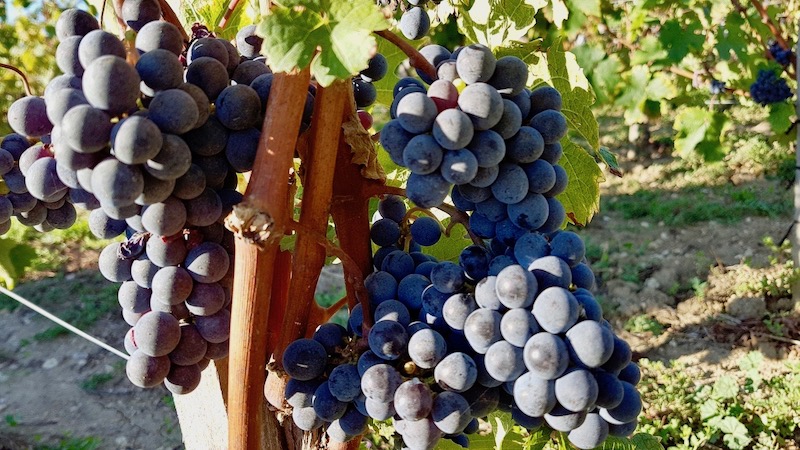Viticulture at Château Roudier
A terroir: the Montagne Saint-Emilion appellation
A wine is created at the very beginning with the work of the vine. Every day, the teams take turns in the vineyards to provide the best care.
The expertise of the head of viticulture and his team allows us to give the best of the vine. Combining ancestral tradition and adaptation to the climate, the work in the vineyard is daily. Over the seasons, this work allows the emergence of a vintage.
The vine from December to February
After the harvest, the vines take on a bronze color. The leaves fall and litter the ground. The vine stock goes dormant during the winter months. The sap descends into the roots.
Pruning allows the vine to regain its vivacity in the spring. This work requires a lot of care and experience. Indeed, it is a question of choosing the preserved wood which will carry the future harvest. This work requires a certain know-how.
Once the vine shoots have been cut, they remain attached to the trellising. The workers will thus “pull the wood” in order to put them in the middle of the rows. These shoots are then crushed to provide humus.


The vine from March to May
In spring, the first rays of the sun warm the vines. These start a new cycle. The buds are developing, the branches are growing and the first leaves are appearing.
This is the time of wedging the feet. The workers come to bend the astes on the lowest wire. The objective is to control the growth of the vine shoot in order to favor the development of the plant and its fruits.
The vine is growing. Then comes the time of desuckering consisting of cutting the vines, non-bearing branches in order to allow the leaf part to develop harmoniously.
It is also the period of treatments in order to limit the pressure of diseases.
The vine from June to September
In June, the first flowers appear. This is the time of fertilization giving life to the future cluster.
The month of July, the bunch continues to grow while remaining green. It is only at the end of July that the berries will change color.
Green harvesting involves breaking down certain bunches of grapes, allowing the other bunches to reach maximum maturity.
In order to benefit from maximum sunshine and aeration, the leaves are then stripped at the level of the grapes, first on the rising sun side and later on the opposite side.

